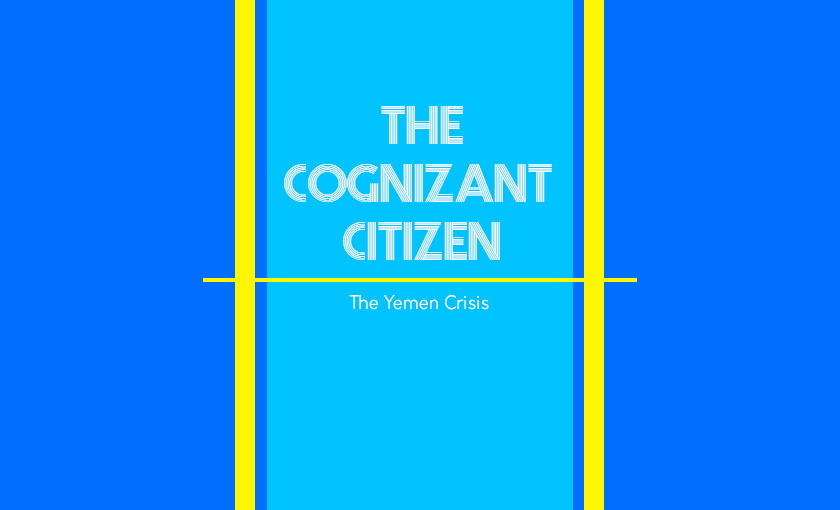
The Republic of Yemen is the second-largest country located at the southern end of the Arabian-peninsula. As the economic crisis dwindled, Yemen became one of the poorest countries in the world. The ongoing Yemen Civil War has worsened the humanitarian crisis leaving more than three-quarters of the population in poverty.
HOW DID THE WAR START?
The Arab Spring—anti-government protests, armed rebellions and uprisings spread across North Africa and the Middle East disrupted the normal functioning of the Government. On June 3, 2011, the then President of Yemen, Ali Abdullah Saleh was injured in a bomb attack in his residence in the presidential compound. The following day, Vice-President Abdrabbuh Mansur Hadi was appointed as the acting President.
In November 2011, Saleh was forced to step down as President and cede his power to deputy Hadi. On February 27, 2012, Saleh formally resigned and pledged to “rebuild” the country’s well-being. Hadi was announced as the President with the support of the ruling party.
Hadi struggled with significant challenges including corruption, unemployment, food insecurity, and frequent attacks by jihadists. Meanwhile, the members of the Houthi Movement (which defends Yemen’s Zaid Shia Muslims), also known as Ansar Allah, took advantage of the President’s weaknesses. They captured the country’s heartland Saada and its surrounding provinces.
Citizens who were unhappy about the transition of presidents, including the Shia rivals—Sunni’s joined the Houthis. By 2014-15, the Houthis, backed by Iran, eventually seized much of the country including the capital—Sana’a. Hadi was compelled to agree to share power with them.
In January 2015, Hadi was forced to resign, but the Parliament refused his resignation. Subsequently, he was put to virtual house arrest by the Houthis, and in March 2015 he managed to flee to Riyadh, Saudi Arabia.
WHAT CAUSED THE CURRENT CRISIS?
Several factors widened these political divisions and led to full-scale military conflict:
Subsidy Backlash
Being under pressure from the International Monetary Fund, which had extended a $550 million loan to Yemen premised on promises of economic reforms, Hadi’s govt lifted fuel subsidies in July 2014. Due to this, the Houthi movement organised mass protests demanding lower fuel prices and a new government.
Houthi Takeover
The Houthis captured much of Sanaa by mid-September 2014. Hadi’s Government resigned under pressure in January 2015, and Hadi later fled to Saudi Arabia.
Military Division
Military units loyal to Saleh aligned themselves with the Houthis, contributing to their battlefield success. Other militias mobilised against the Houthi-Saleh forces, aligning with those in the military who had remained loyal to the Hadi government.
Saudi Intervention
In 2015, with Hadi in exile, Riyadh launched a military campaign— primarily fought from the air— to roll back the Houthis and restore the Hadi administration to Sanaa.
HOW ARE OTHER COUNTRIES INVOLVED?
Saudi Arabia, along with eight other Sunni-majority countries, began an air campaign aiming at defeating the Houthis who were believed to be militarily backed by Iran. Ending Iranian influence in the country as well as reviving Hadi his power and restoring his Government were the key objectives of the combat. The coalition received logistical intelligence support from the US, UK and France. With the backing from such state-of-the-art countries, Saudi Arabia has complete superiority over Yemen.
On December 13, 2018, the Houthi rebels and the Government met at Stockholm, Sweden to resolve all conflicts. The agreement was meant to ease the situation in Yemen. Under intense pressure from the Houthis, from the other members of the Government, and a looming famine, President Abdrabbuh Mansur Hadi finally agreed to the bare minimum requirements.
The agreement included three components:
- An executive mechanism on activating the prisoner exchange agreement
- An agreement on the city of Hudaydah (or Hodeida) and the ports of Hudaydah, Salif and Ras Issa
- A statement of understanding of Taiz
The United Nations took the Stockholm Agreement as an opportunity to get at least a toehold on the situation in Yemen.
WHAT HAS HAPPENED SINCE THEN?
The citizens have been facing deaths due to the mosquito-transmitted diseases—Chikungunya and Dengue since 2011. As of now, there is no cure for the disease, and treatment is entirely based on symptom relief. Over a hundred deaths were suspected due to the diseases. The medical teams are not able to contribute much to the medical services needed as many of the equipment and facilities were lost in the war.
A sudden outbreak of cholera in 2016 in the country has left the medic services speechless. Already only half-functioning 3,500 medical facilities were battling fatalities, injuries, malnourishment, and diseases struggling to deal with cholera. And with the recent widespread fear of COVID-19, the virus did not spare Yemen either.
WHAT ABOUT THE HUMAN COST?
Over 16,000 prisoners were released after the Stockholm Agreement within a year. As of September 2019, over 7,500 civilians died due to the airstrikes. 12,000 civilians were killed in a direct attack, and more than 23,000 fatalities were reported.
More than 2.2 million people were suspected with cholera, and 3,895 died with related illnesses. As of June 16, 2020, Yemen recorded 208 deaths. A total of 844 people are confirmed positive with the illness while only 79 have successfully recovered.
Thousands of people died due to malnutrition, diseases, and ill-health. Over 85,000 children with malnutrition died between April 2015 and October 2018.
WHAT HAS THE HUMANITARIAN IMPACT BEEN?
Families in Yemen have experienced so much pain and anguish that they have seen five years of war, widespread displacement, and a crippled economy, along with dengue, cholera and now coronavirus. The situation has worsened under the land, sea and air blockade imposed by coalition forces, obstructing vital supplies of food and medicines. Due to this, food prices have increased by over 25%, and people cannot afford to eat. More than twenty million Yemenis are struggling with food insecurity, and half of those are on the brink of the famine.
There is a lack of proper infrastructures, like hospitals, schools, and water plants. The water structure in Yemen operates at less than 5% efficiency. In February 2020, the UN Refugee Agency reported that since 2015, 3 million people had been displaced due to the war.
The United Nations has found that both the Houthis and coalition forces have violated international humanitarian law by attacking civilians, including the coalition’s destruction of a hospital run by the international relief organisation Doctors Without Borders. Other violations perpetrated by both sides include torture, arbitrary arrests, and forced disappearances.
WHAT ARE THE PROSPECTS OF A SOLUTION TO THE CRISIS?
UN-backed peace negotiations have made some progress but failed to bring an end to the conflict. In December 2018, talks in Stockholm called for a cease-fire in Hodeidah, the exchange of more than fifteen thousand prisoners, and the creation of a joint committee to de-escalate violence. However, attempts to implement the agreement stood ineffective. Divisions within the Saudi-led coalition dampened hopes for a broader resolution, especially after the August 2019 seizure of Aden by UAE-backed separatists.
A lasting solution will require appeasing the three main factions: the Houthis, Hadi’s Government, and the STC, each of which has unique interests and internal divisions. In the meantime, millions of people still need humanitarian assistance to survive.
International agencies such as the United Nations High Commissioner for Refugees (UNHCR) and global communities such as Integrated Modalities to Promote Agricultural, Cash-for-Work, and Training in Yemen (IMPACT Yemen), Yemen Emergency Food Assistance (YEFA), and many more are providing aids and constant supplies and facilities for the well-being of the Yemenis.
Millions of people have suffered for years and even now, there’s no end to it. It’s been described as the world’s worst crisis, bad enough to wipe off Yemen from maps. The urgency of the matter isn’t shown by many major media outlets. However, thanks to social media and the power it holds, more people are becoming aware of the crisis. We hold the power to change things from the comfort of our homes for those who might not even have one.
You can donate here:
https://donate.unhcr.org/in/yemen/~my-donation?
https://www.muslimglobalrelief.org/yemen-appeal/
https://donatenow.wfp.org/yemen/~my-donation
All of these sites accept INR.
Petitions you can sign:
https://www.change.org/p/rt-hon-jeremy-hunt-mp-end-the-war-in-yemen-start-the-peace-talks
https://www.change.org/p/muslim-aid-justice-for-yemen
https://www.change.org/p/united-nations-find-common-ground-and-end-conflict-in-yemen
https://www.thepetitionsite.com/286/839/381/
Written by Kaavya Azad and Vaishnavi Karkare for MTTN
Featured Image by Bhargabi Mukherjee for MTTN
Images (in order) by BBC, The Guardian, WHO
Sources: Wikipedia, Global Community, BBC News, UNHCR, Eastern WHO EMRO
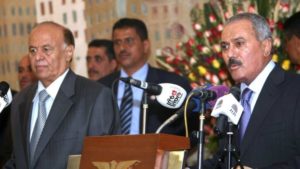
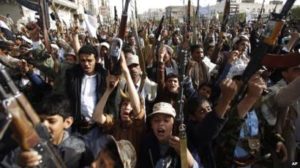
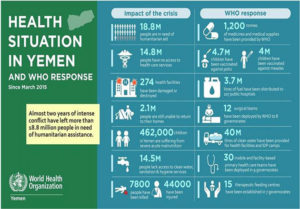
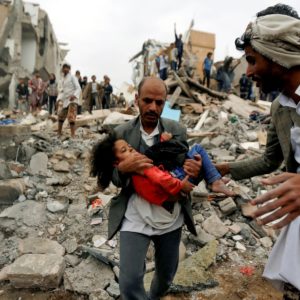
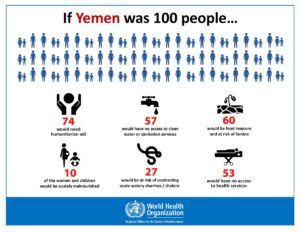
Leave a Reply
You must be logged in to post a comment.